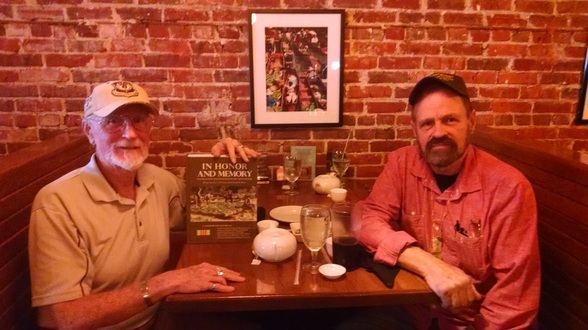Marty and I had so much to talk about that I failed to mention to him that it was fifty-two years ago this weekend that I enlisted in the United States Army as a seventeen year old private. When we first arrived at the Fort Dix reception station, if a soldier had a really large foot or a really small one, he was issued old brown boots rather than the new black boots of 1963. There were signs prominently posted in the barracks stating, No boot dying in barracks or on back steps. Luckily I was not issued the World War II leftovers, while the really big guys, and the smaller ones in my company learned the complexities of dying combat boots.
The other remnant of World War II and Korea that I did deal with was the M-1 Garand Rifle. The M-14 was still being developed, not to mention the M-16 that was still years in my future. In basic, I became one of the company's high scorers on the rifle range with the M-1, a weapon that served my predecessors fearlessly at Normandy and Inchon. I took basic training in February and March 1963, one of the coldest winters that Fort Dix had in quite a few years, and some soldiers suffered from frost bite during our basic training cycle. The thing I remember most about basic, was crawling into my bunk at night, in a nice warm barracks, and although totally exhausted, wondering what we would be learning and doing the next day. I looked forward to it all, however not everyone felt the same way.
During my basic training they never mentioned Vietnam. Yet, the first two tactical helicopter units, the 8th and 57th transportation companies, had been in Southeast Asia since December 1961, flying CH-21 Shawnees into combat. In July 1962, the first helicopter losses of the Vietnam War occurred. Tencza Compound, Camp Goldberg, and Guthrie and Lane hangars would be named for those who died in that crash as a result of enemy fire from the ground. Six days after I had arrived at Fort Dix, US Army advisor Captain Leon D. Kramer was killed in Quang Ngai Province and subsequently the Kramer Compound in Quang Ngai City was named in his memory. There had been many locations named before my entry into military service, about twenty in all. The fallen were being honored by naming locations for them since 1956, when few if anyone in the states could even find Vietnam on a map, and as basic trainees, my fellow soldiers and I had no understanding of what or where Vietnam was.
By the time I arrived in Vietnam in June 1968, there were almost 400 facilities and installations named in honor of the fallen. I have now registered a total of over 800 locations in the new book, not to mention another 2,300 fire bases and landings zones. Its a long way from 17 to almost 70. Fifty-two years ago I had absolutely no idea what the future held.

 RSS Feed
RSS Feed